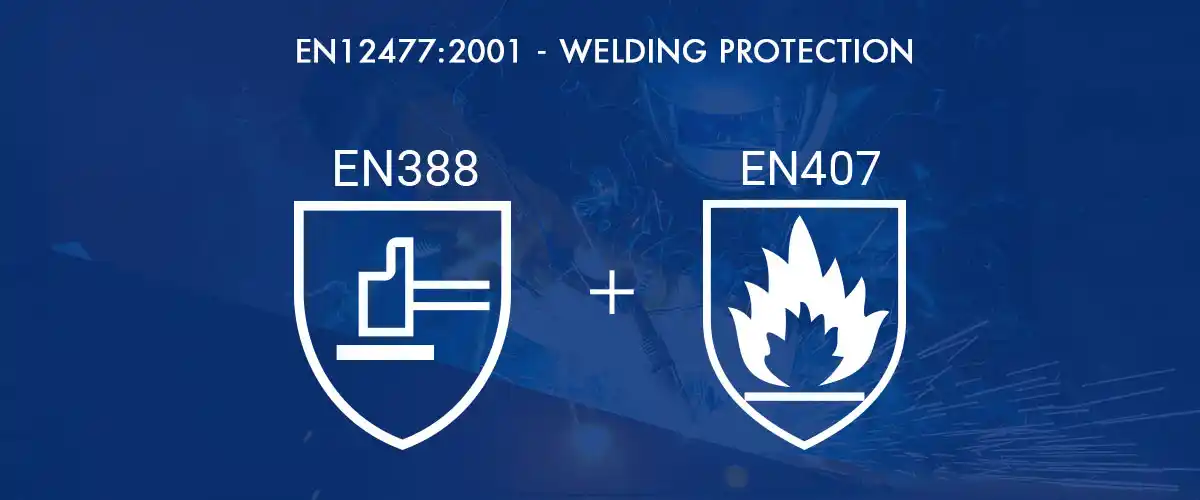

The EN12477:2001 standard is intended explicitly for gloves designed to be used during welding operations and similar processes. This standard consists of a combination of EN420 (general glove requirements), EN407 (protection againts thermal risks, heat and fire) and EN388 (protection against mechanical risks).
Welding gloves are required to withstand mechanical risk and heat resistant risk, particularly to small splashes of molten metal, short exposure to convective heat, to radiant heat, and to contact heat.
EN12477:2001 standard also assess according to its design and purpose. It is defined into two categories:
Type A
Refers to gloves with higher protection againts heat but with lower flexibility and dexterity. This type is recommended for all welding operations where higher protection would be needed, except TIG welding.
Type B
Refers to gloves with lower protection againts heat but with greater flexibility and dexterity. Recommended for TIG welding.
| Minimum performance required | |||
| Requirements | Standard | Type A | Type B |
| Abrasion resistance | EN388 | Level 2 | Level 1 |
| Blade cut resistance | EN388 |
Level 1 |
Level 1 |
| Tear resistance | EN388 |
Level 2 |
Level 1 |
| Puncture resistance | EN388 |
Level 2 |
Level 1 |
| Burning behavior | EN407 | Level 3 | Level 2 |
| Contact heat resistance | EN407 |
Level 1 |
Level 1 |
| Convective heat resistance | EN407 |
Level 2 |
- |
| Resistance to small splashes of molten metal | EN407 |
Level 3 | Level 2 |
| Dexterity | EN420:1998 | Level 1 |
Level 4 |
Welding is a specialized work that needs specific requirements, particularly on heat protection and dexterity. However, you will need to understand what type of welding work you will be involved in to pick the right gloves for the task you do.
For stick and MIG welding, higher heat protection is needed to lower the risk of getting heat related injuries.
In contrast, TIG welding requires a higher level of dexterity to complete the task yet maintain a decent level of heat protection.
The EN standard is essential as the test result guaranteed minimum heat protection. Therefore, you will be able to use the test result as a reference point to make informed decisions.
EN407:2020 protective gloves against thermal risks (head and/or fire)
EN659:2003 – Protection against thermal risks, for firemen